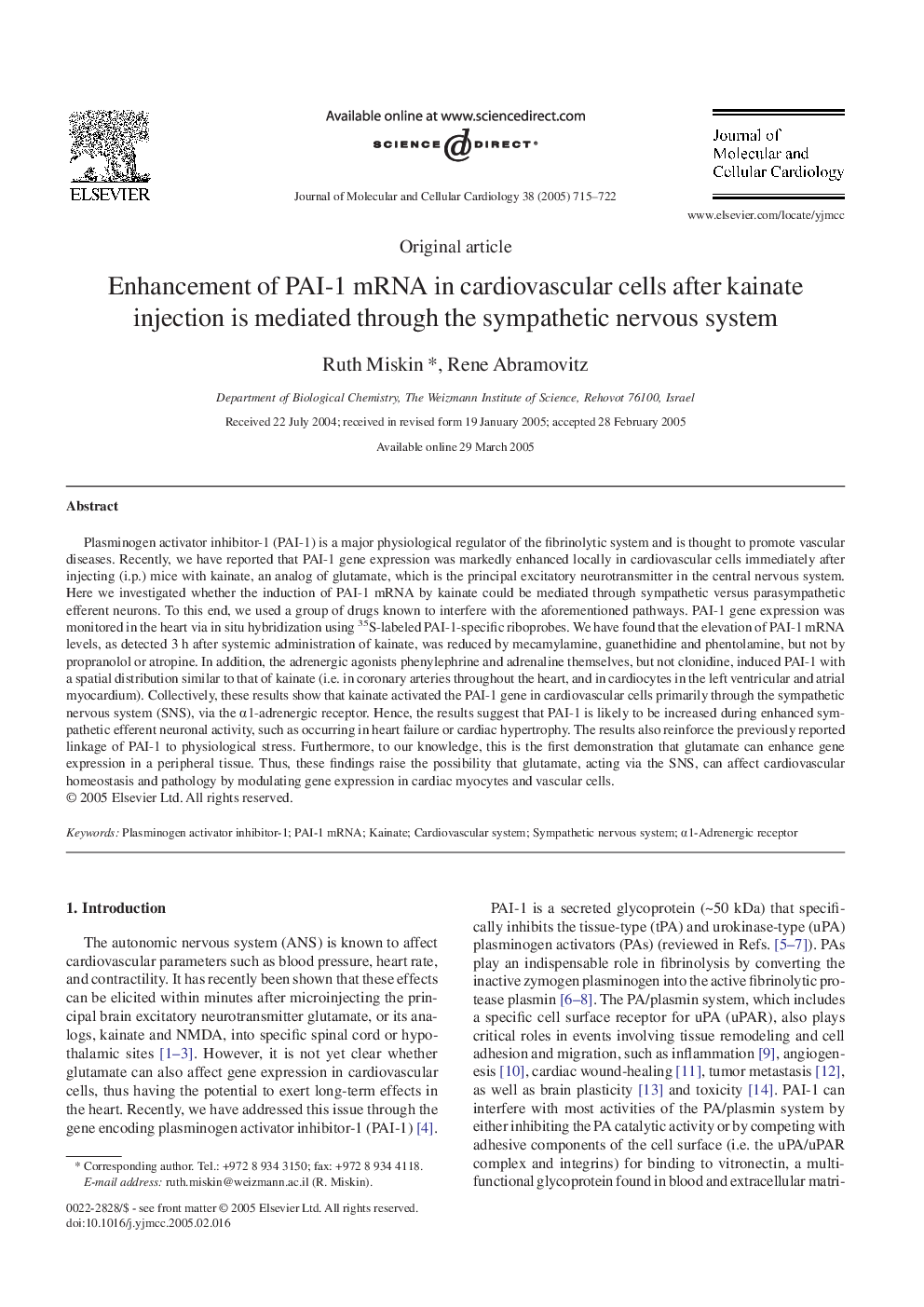| Article ID | Journal | Published Year | Pages | File Type |
|---|---|---|---|---|
| 10954312 | Journal of Molecular and Cellular Cardiology | 2005 | 8 Pages |
Abstract
Plasminogen activator inhibitor-1 (PAI-1) is a major physiological regulator of the fibrinolytic system and is thought to promote vascular diseases. Recently, we have reported that PAI-1 gene expression was markedly enhanced locally in cardiovascular cells immediately after injecting (i.p.) mice with kainate, an analog of glutamate, which is the principal excitatory neurotransmitter in the central nervous system. Here we investigated whether the induction of PAI-1 mRNA by kainate could be mediated through sympathetic versus parasympathetic efferent neurons. To this end, we used a group of drugs known to interfere with the aforementioned pathways. PAI-1 gene expression was monitored in the heart via in situ hybridization using 35S-labeled PAI-1-specific riboprobes. We have found that the elevation of PAI-1 mRNA levels, as detected 3 h after systemic administration of kainate, was reduced by mecamylamine, guanethidine and phentolamine, but not by propranolol or atropine. In addition, the adrenergic agonists phenylephrine and adrenaline themselves, but not clonidine, induced PAI-1 with a spatial distribution similar to that of kainate (i.e. in coronary arteries throughout the heart, and in cardiocytes in the left ventricular and atrial myocardium). Collectively, these results show that kainate activated the PAI-1 gene in cardiovascular cells primarily through the sympathetic nervous system (SNS), via the α1-adrenergic receptor. Hence, the results suggest that PAI-1 is likely to be increased during enhanced sympathetic efferent neuronal activity, such as occurring in heart failure or cardiac hypertrophy. The results also reinforce the previously reported linkage of PAI-1 to physiological stress. Furthermore, to our knowledge, this is the first demonstration that glutamate can enhance gene expression in a peripheral tissue. Thus, these findings raise the possibility that glutamate, acting via the SNS, can affect cardiovascular homeostasis and pathology by modulating gene expression in cardiac myocytes and vascular cells.
Keywords
Related Topics
Life Sciences
Biochemistry, Genetics and Molecular Biology
Cell Biology
Authors
Ruth Miskin, Rene Abramovitz,
